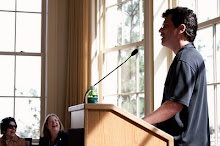As what I think (but am not 100% sure) will be my last post for a while about the interface between Charlotte Bronte’s Jane Eyre and Jane Austen’s (JA’s) novels to which Bronte covertly alluded, the title of this post gives away yet one more very clever aspect of that allusion, which it does not take very long to explain, so here goes.
The narrator in Northanger Abbey (NA) makes a very big deal, in a way unique in JA’s novels, emphasizing, in a highly satirical tone, that Catherine is a _heroine_ in her own mind; but then the narrator, every time, deflates the expectations of drama, suspense, and romance that Catherine, as an obsessive reader of Gothic novels, assumes would be the fate of a heroine.
However, there is a double pun working just below the surface of the novel rotating around two words which are linguistically connected to “heroine”, and to each other: “heir” and “hare”.
Although the narration in NA does not underscore it, Catherine’s status as an heir or non-heir turns out to be _the_ driving factor in the plot of the novel. John Thorpe imagines Catherine is the heir of the wealthy Allens, and courts her aggressively; General Tilney hears this from Thorpe and throws the Tilney hat into the ring for the sweepstakes to win Catherine’s hand in marriage; but then General Tilney hears that Catherine is _not_ really an heiress, takes her instead for a gold-digger, and throws her out of Northanger Abbey without warning. And the irony is that in the end Catherine does receive a reasonable inheritance from her father after all, to begin marriage with. So unquestionably Catherine is an “heir” (or heiress if you prefer) in the novel.
And so a very clever subtitle of the novel could well have been “The Heir and Many Friends”, and that is what JA is subtly signaling at the beginning of NA, when she mentions, seemingly in passing, that Catherine has read John Gay’s Fable, “The Hare and Many Friends”, in which the hare finds out that many friends are not really true friends.
And so, even more subtly, Catherine can be considered as a “hare” in the sense of Gay’s ribald fable, given that she is courted aggressively by Thorpe, and with insincere charm (I would also suggest) by the General.
So the title of this blog post is one that I believe JA would have approved of.
And that happens to be one more allusion by Charlotte Bronte to JA, in that the same pun is played with in the name of Jane Eyre (pronounced exactly like “heir”), as I have suggested in one of my posts yesterday.
It's no coincidence that Jane Eyre _also_ turns out to be an heiress, and also that she encounters, especially early in life, many false friends.
And it's no coincidence that the young Jane Eyre tells the reader: " I had meant to be so good, and to do so much at Lowood: to make so _many friends_, to earn respect and win affection."
And while friendship is a central theme in all of JA’s novels, I would argue that NA is particularly so, because it is the one novel where the heroine has no very close sister (like Jane Bennet or Marianne Dashwood) and no bosom friend (like Charlotte Lucas , Mrs. Weston or Harriet Smith) , and so is more lacking in close female companionship than any Austen heroine, even fewer than Anne Elliot. She is most, in other words, like the hare in Gay’s fable.
It is no coincidence that Catherine has false friends in abundance—Isabella and John Thorpe, and also General Tilney are all nasty pieces of work, and even the Allens are hardly the best parental surrogates in the history of the world.
If you want an enjoyable exercise in followup to what I have claimed in this post, search the text of Northanger Abbey for the word “heir” and for the word “friend” and, an hour later, you will have a fuller sense of how significant this seemingly trivial bit of wordplay really is in helping get to the heart of the novel’s meaning. Then do the same with the text of Jane Eyre, and you will feel the connection between the two novels even more strongly.
Cheers, ARNIE
Popular Posts
- Deirdre Le Faye & Me: "I am a scholar, she is a scholar: so far we are equal"
- Darcy's "We neither of us perform to strangers": a Radical New Interpretation
- The Hunger Games’s Veiled Allusion to Shakespeare’s Titus Andronicus
- Rick Santorum would have been the worst person in the world to Jane Austen too!
- August Wayne Booth in Once Upon A Time: Jane Austen Really IS Everywhere in 2012!
- 20 shades of hero/villain Mr. Darcy
- Can Jane Austen forgive Marianne?
- Miss Bennet, Elizabeth, Lizzy, Eliza: who calls her what....and why
- The Great Gadsby: an overnight lesbian feminist ‘comedy’ sensation 10+ years in the making (& 3 millenia overdue)
- Austenland: The Movie was Fun, but the Novel was Better [SPOILER ALERT as to both]
Thursday, April 14, 2011
Subscribe to:
Post Comments (Atom)

No comments:
Post a Comment